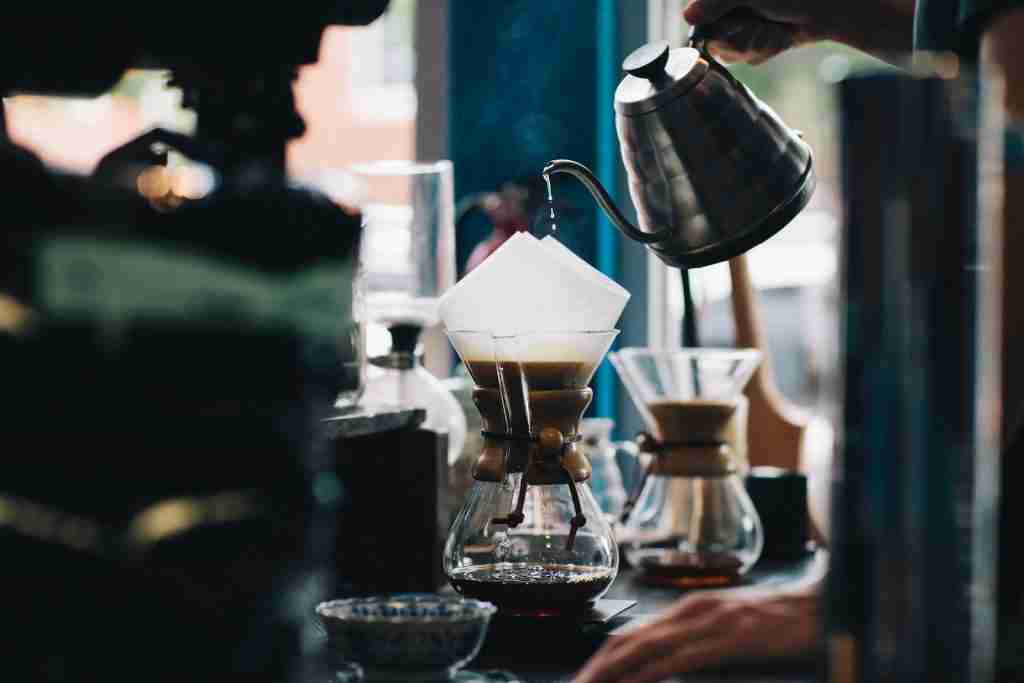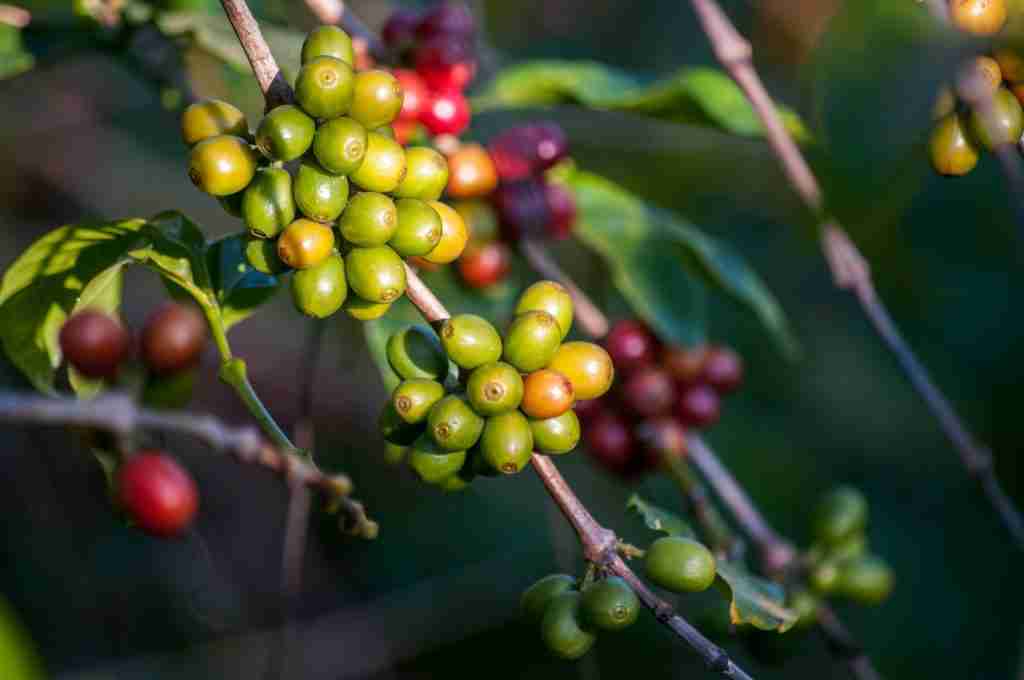26 Fun Facts About Coffee | From Beans to Strange Uses
1. Coffee is the second most traded commodity on Earth after oil.
Coffee is super popular around the world. In fact, only oil is traded more than coffee. This means that every day, tons of coffee are bought and sold everywhere, making it a big deal in the trading world. It’s not just a morning drink; it’s a global business.
2. Coffee beans are actually the seeds of coffee cherries.
When we say coffee beans, it’s a bit misleading. They aren’t beans at all. They’re seeds from the inside of a fruit known as a coffee cherry. So, the name bean is just a common way to refer to them.
3. Espresso means pressed out in Italian.
Espresso is an Italian word that means pressed out. This name makes sense because of how it’s made. To make espresso, hot water is forced or pressed through finely ground coffee.
This method gives the drink its strong flavor. So, when you sip an espresso, you’re enjoying a pressed-out coffee.
4. Finland consumes the most coffee per capita in the world.

Finland has a big love for coffee. People in Finland drink more coffee than anyone else in the world, per person. On average, each Finn consumes an impressive 12 kilograms of coffee every year.
This means that each person in Finland drinks more cups daily than in other countries. It’s a big part of their culture. So, if you ever visit Finland, expect to have lots of coffee breaks!
5. The first webcam was created to monitor a coffee pot.
The first webcam had a simple job: watch a coffee pot. At the University of Cambridge, people wanted to see if coffee was ready without walking to the pot.
So, they set up a camera to show the coffee pot on their computers. It was a clever way to save time and avoid empty trips. This fun use of technology led to the invention of the webcam we know today.
6. Hawaii is the only U.S. state that grows coffee commercially.
Hawaii holds a unique spot in the U.S. when it comes to coffee. It’s the only state where coffee is grown for business.
The tropical climate and rich soil make it perfect for coffee plants. So, while the U.S. has many coffee lovers, only Hawaii can claim to grow it on its land.
7. Coffee beans can be eaten as a food and are found in some candies.
Coffee beans aren’t just for brewing a drink. They can be eaten too. Some people enjoy the taste of roasted coffee beans on their own.
You might even find them covered in chocolate or mixed into candies. So, the next time you want a caffeine boost, you could try munching on some beans.
8. Instant coffee was invented in 1901 by a Japanese-American chemist.

Back in 1901, a clever Japanese-American scientist had an idea. His name was Satori Kato, and he came up with instant coffee.
He found a way to make coffee that was quick and easy to prepare. Just add water, and you have a cup ready. His invention changed how many people enjoy their daily brew.
9. The world’s most expensive coffee, Kopi Luwak, involves civet digestion.
Kopi Luwak is a coffee that comes with a unique twist. It’s one of the priciest coffees you can buy. The reason? It involves a civet, a small mammal.
The civet eats coffee cherries, digests them, and then excretes the beans. These beans are collected, cleaned, and roasted to make this special coffee.
10. Coffee can help burn fat; it boosts metabolic rate by 3-11%.
Coffee isn’t just a wake-up drink, it has some health perks too. One of them is helping people burn fat. When you drink coffee, it can speed up how fast your body uses energy.
This faster metabolic rate means you burn more calories, even when you’re just sitting. So, having a cup might give your weight loss efforts a little boost.
11. Drinking coffee can reduce the risk of Alzheimer’s and Parkinson’s.
There’s more good news for coffee lovers. Regularly sipping on this brew might protect your brain as you age. Studies have shown that coffee drinkers have a lower chance of getting Alzheimer’s and Parkinson’s diseases.
These are two common brain disorders that affect older people. So, your morning cup might be doing more than just keeping you alert.
12. Brazil has been the world’s largest coffee producer for over 150 years.
Brazil makes some of the best coffee in the world. The best coffee growers in the world have been in this South American country for more than 150 years.
Brazil is thought to have made over 54 million 60-kilogram bags in 2023, which is a lot more than the almost 51 million bags they made the previous year. Brazilian coffee plants have a strange pattern, they produce a lot one year and not as much the next.
13. In 1675, England’s King Charles II banned coffeehouses fearing rebellion.
Back in the 1600s, coffeehouses were the talk of the town in England. But they weren’t just places to sip a drink. People gathered there to chat and share ideas.
This worried King Charles II. He thought these coffee chats might lead to plans against him. So, in 1675, he decided to shut them all down.
14. There’s a spa in Japan that lets you bathe in coffee.
Japan is known for its unique spas, and the Hakone Kowakien Yunessun Spa and Resort in Hakone offers a special treat for visitors. Instead of soaking in regular water, you can take a dip in a coffee bath.
This resort believes that bathing in coffee has benefits for the skin. Alongside coffee, they also have other food- and drink-based spas like wine, tea, and even ramen.
15. A cup of black coffee has 2 calories, which is one of the fun facts about Coffee.
When you think of coffee, you might imagine a rich and flavorful drink. But did you know it’s also low in calories? A simple cup of black coffee, with no added sugar or cream, has just 2 calories.
It’s a guilt-free way to enjoy a warm beverage, especially if you’re watching your calorie intake.
16. The fear of running out of coffee is called Nospressophobia.

There’s a unique word for the fear of running out of coffee, Nospressophobia. It might sound funny, but for true coffee lovers, the thought of not having their favorite brew can be a real worry.
This term captures that feeling when you see your coffee jar getting empty and the panic that might set in.
17. Coffee beans emit carbon dioxide for weeks after they’re roasted.
Roasting coffee beans is an art. But after they’re roasted, the beans aren’t just static. They continue to change. For several weeks post-roasting, coffee beans release carbon dioxide.
This gas emission is a natural part of the bean’s aging process. It’s also why freshly roasted beans are often packed in bags with little vents, to let the gas out.
18. New Yorkers drink almost 6.7 times more coffee than other U.S. cities.
New York is known for its fast-paced lifestyle, and perhaps that’s why its residents love coffee so much. In fact, New Yorkers have a huge appetite for this brew.
They drink almost 6.7 times more coffee than people in other U.S. cities. So, if you visit the Big Apple, you’ll see lots of coffee shops and people with cups in hand.
19. Before coffee, the popular morning drink was beer and wine.
Imagine having a beer or wine to start your day. That’s what a lot of people did before coffee became the best thing to drink in the morning.
Beer and wine were the go-to morning beverages. But once coffee entered the scene, it quickly took over as the preferred wake-up drink.
20. A coffee tree lives for between 60 to 70 years.

Coffee trees are not just short-term plants. They have a long life. A typical coffee tree can live for 60 to 70 years.
During its lifetime, it will produce beans that can make thousands of cups of coffee. So, when you sip your brew, remember the long journey of the tree that made it possible.
Each coffee tree, with its green leaves and cherries, doesn’t produce as much as you might think. On average, a single coffee tree will give only about 1 pound of coffee beans in a year.
21. Dark roast coffees usually have less caffeine than lighter roasts.
Dark roast coffee has a milder taste because it’s roasted longer, which makes the beans appear darker and shinier. During this process, some caffeine is lost, making dark roasts contain less caffeine compared to lighter roasts.
This means if you prefer a milder coffee flavor with less caffeine, dark roasts are a good choice. Lighter roasts, on the other hand, maintain more of their natural caffeine punch.
22. The word coffee comes from the Arabic word qahwa meaning wine.
The word coffee has its roots in the Arabic term qahwa, which translates to coffee wine. This intriguing name reflects the historical context of using coffee as a wine alternative, especially in adherence to the Islamic prohibition of alcohol consumption.
When coffee first arrived in Europe, it was aptly referred to as Arabian wine, highlighting its Middle Eastern origins.
23. The world’s largest coffee mug, made in 2010, holds 2019 liters.
In 2010, a record was set for the world’s biggest coffee mug. This wasn’t just a slightly larger mug, it was massive, holding a whopping 2019 liters of coffee. That’s enough to serve a small town.
24. Coffee stays warmer when you add cream since it slows cooling.

Adding cream to your coffee does more than just change its flavor. It has a scientific effect too. When you pour in cream, your coffee stays warm for a longer time.
The cream slows down the rate at which the coffee cools, so you can enjoy a warmer sip for longer.
25. Starbucks purchases and roasts over 3% of the world’s coffee beans.
Starbucks, with its iconic green logo, plays a big role in the coffee industry. The company buys and roasts a significant amount of coffee beans.
In fact, over 3% of the world’s total coffee beans end up at Starbucks. That’s a lot of beans for just one company.
26. Coffee is grown in over 70 countries across the world.
Coffee plants thrive in various parts of the world, with over 70 countries growing this beloved crop. While Brazil is a major producer, other countries like Colombia, Ethiopia, Vietnam, and Indonesia also have vast coffee farms.
Each region offers beans with unique flavors and characteristics, contributing to the diverse world of coffee.
FAQs
Coffee grounds can benefit plants by adding organic material to the soil and improving drainage, water retention, and aeration. They are especially good for acid-loving plants like azaleas and roses. However, it’s best to compost them first or use them as much to avoid potential fungal growth.
Yes, coffee can stimulate the movement of the intestines and may lead to diarrhea for some individuals. This effect can be attributed to its caffeine content, acidity, and natural compounds that stimulate stomach acid production. If one is sensitive, it’s advisable to limit or monitor coffee intake.
While coffee is a stimulant that can boost alertness, its diuretic properties can lead to dehydration, which may cause fatigue. Additionally, the eventual caffeine crash after its effects wear off can also make one feel tired.
No, there’s no scientific evidence to support the myth that coffee stunts growth. This misconception likely arose from concerns about caffeine affecting bone density, but moderate coffee consumption does not have a significant impact on growth in children or adolescents.
Coffee can cause a temporary spike in blood pressure, especially in those who don’t consume it regularly. However, for regular drinkers, the effect diminishes. It’s still advisable for individuals with hypertension to monitor their coffee intake and consult with a healthcare professional.
Coffee itself has minimal calories and doesn’t lead to weight gain. However, additives like sugar, cream, and flavored syrups can increase their caloric content. Additionally, caffeine can stimulate appetite in some people, potentially leading to increased food intake.
Robusta coffee beans contain the most caffeine, nearly double that of Arabica. In coffee drinks, brewed methods like drip typically have more caffeine than espresso. Among brands, Death Wish Coffee claims to be highly caffeinated. Always check specific brands for exact content.







